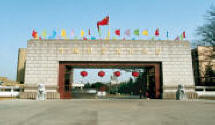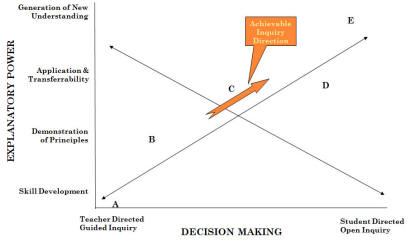




|
Ningfeng (Peter) Zhao
Assistant Professor
Department of Chemistry
P.O. Box 70695
East Tennessee State University
Johnson City, TN 37614
Email: Zhaon@etsu.edu
Tel: (423) 439-4306, Fax: (423) 439-5835
Education
Postdoctoral, University of Missouri, University of Nevada,
Reno, 2006-2008
Ph.D., Wichita State University, 2005
B.S., University of Science & Technology of China, 2000
Teaching
Introduction to Chemistry Survey
General Chemistry
Descriptive Inorganic Chemistry
Advanced Inorganic Chemistry
Reaction mechanism of Coordination Compounds
Special Topic of Bioinorganic Chemistry
Green Revolution: Challenges and Opportunities
Research Interests
Chemical education, as well as many other science
disciplines, has a basic problem that the form of teaching is not optimal for
promoting student learning. I have developed interests in designing and
implementing inquiry-based science education and my research focus on K-16
inquiry-based science curriculum and professional development. For students,
inquiry-based instruction encompasses not only the understanding of scientific
concepts and principles, but also the ability to engage in higher-level
intellectual activities. For instructors, it is critical to help them overcome
the common constraints of inquiry practice, and provide sustained support for
curriculum development and implementation that apply the essential features of
inquiry, and improve the quality of both teaching and learning. Showing below is
the Inquiry Continuum with two-dimensional representation reflecting the process
and degree of inquiry in a classroom exercise.

I also have inorganic
research interest in synthesis and characterization of multi-dentate transition
metal complexes, which contribute to the sciences of the new century – material
and bioinorganic sciences. Multi-dentate ligands such as polypyrazolylborate,
poly(1,2,4-triazolyl)borate, and polythioimidazolylborate are designed and
synthesized due to their versatility and potential binding capability.
Structures, properties, and reactivities of transition metal complexes from the
series of ligands can be varied by changing either the center metal ion or the
peripheral ligand substituents, leading to the formation of molecular materials
with bulky properties, or bioactive molecules that can help understand natural
bioinorganic mechanism. Showing below are X-ray crystal structures of cyano-substituted
bispyrazolylborate thallium complexes.


Selected Publications
Johnson, D., Eichhorn, D., Moore, C., Mwania, T. &
Zhao, N., “Cyano-substituted
Bispyrazolylborate Thallium(I) Complexes”,
J. Chem. Cryst.
2011, under review.
Zhao, N., Witzig, S.,
Adams, J., Weaver, J. & Schmidt, F., “Transformative Professional
Development: Inquiry-based College Science Teaching Institutes”, J. Col.
Sci. Teaching. 2012, 41(3), 38.
Zhao, N. & Wardeska, J.,
“Mini-journal Inquiry Laboratory – A Case Study in a General Chemistry
Kinetics Experiment”, J. Chem. Educ. 2011, 88, 452.
Witzig, S., Zhao, N.,
Schmidt, F., Adams, J., Weaver, J. & Abell, S., “Achievable Inquiry in the
College Laboratory: The Mini-journal”, J. Col. Sci. Teaching. 2010,
39(6), 14.
Zhao, N., Van Stipdonk,
M., Stern, C. & Eichhorn, D., “Cyanoscorpionates: Synthesis and
Crystallographic Characterization of a One-Dimensional Cu(I) Coordination
Polymers”, Inorg. Chem. 2008, 47, 5945.
Shearer, J. & Zhao, N.,
“[NiII(BEAAM)](Me4N): A Synthetic Model for NiSOD that Contains Ni in a
Mixed Amine/Amide Coordination Environment”, Inorg. Chem. 2006,
45, 9637.
Last Updated by Peter Zhao, Nov. 2011